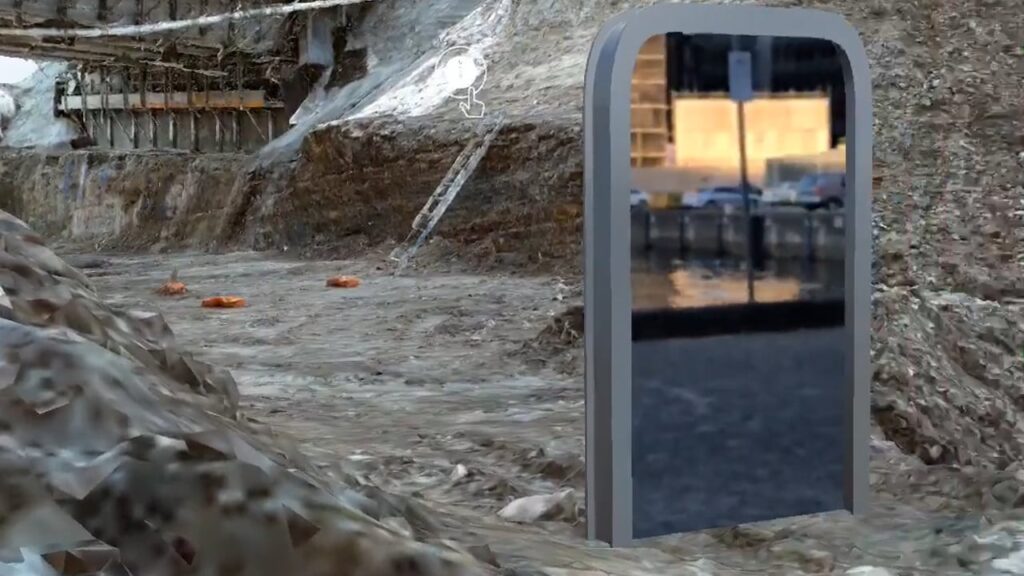Virtual reality (VR), augmented reality (AR) and mixed reality (MR) are opening doorways to the construction industry and enabling architects to take building designs to the next level.
Economists estimate the latest VR technologies will lower construction costs by around 90% and could save the industry up to $15.8 billion that is typically lost due to errors born from the use of inadequate data. Technology has continuously advanced the methods employed by the construction industry. VR and AR build on existing technologies to provide deeper insights that enable construction teams to plan efficiently.
The latest advancements give entire teams the ability to plan a project to the minuets detail; from enhancing safety, developing complex designs and even selecting the best materials for the job. Moreover, because virtual and augmented reality brings building projects to life, project managers can present stakeholders with a precise rendition of their vision. The detail you present can be the difference between sealing investment or missing out.
The Advantages of AR In Construction
Augmented reality enables designers to overlay digital models on an actual site. This enables you to see how the elements of a building project will appear in the external world.
As a result, the empty shell of a building or construction site can be brought to life as though it already existed. 3D blueprints eliminate the use of physical blueprints and help project teams to avoid errors and troubleshoot problem areas prior to starting the construction work. Moreover, project teams can clearly visualise where everything will be installed from ductwork to pipes, columns, windows and access points. In addition, it’s easier to make modifications before, during and after the project.
Using VR to Enhance Collaborative Building Projects
Effective communication is critical during the course of a construction project. Virtual reality provides an exciting solution that literally puts collaborative teams on-site without even being on the construction site. VR simulates an environment by creating an exact rendering inside a computer. With the use of VR headsets, stakeholders can step inside the simulation and explore the layout of a building.
This enables various teams to organise and plan how to efficiently and effectively carry out the work well in advance of the building project starting in earnest. By creating a virtual and immersive environment, architects can obtain an accurate measure of spacing, layout and materials from start to finish. Being able to see a work-in-progress without the existence of a physical building helps you to make informed decisions with confidence.
In addition, architect firms can easily make modifications such as amending the materials within the same design. This saves a significant amount of time and clearly shows clients the options so they can also make informed decisions based on their aesthetic preference and their budget. Essentially, VR allows the entire project team to easily navigate the complexities and demands that are typical sticking points in the construction industry. Together with AR, mixed reality solutions dramatically enhance the capability of construction teams.
As a result, project teams will be able to reduce costs, remain competitive, and even get ahead of their rivals. It is forecast that the entire construction industry will have adopted AR and VR by 2029. The sooner you adopt these innovative technologies, the easier it will be to get ahead and stay ahead.
Improve Workplace Safety Standards
The construction industry records the highest number of deaths in the UK. There are four times as many fatal injuries than any other industry. Muscular-skeletal injuries account for 57% of accidents. Developers are finding innovative ways of improving safety standards in construction zones in an effort to significantly reduce the number of deaths and injuries.
Computer prototypes can help to identify potential hazards before the project starts. Inspectors will also be able to survey the job site with far more accuracy. Not only will this improve safety standards but can also expedite planning permission.
VR and AR technology also facilitates construction training. Inside a simulator, workers can familiarise themselves with the layout, the rigging, the machinery (or tools) and how they can effectively and safely perform the job. There is also the potential to shave time from the building process because workers already know what they need to do.
For employees that are new to the industry, VR simulations provide a safe environment in which to train. Here they can learn how to handle potentially dangerous situations in a safe environment and use the equipment without any hint of danger. VR and AR augurs an exciting time for the construction industry and provides architects and designers with tools that will help them create awe-inspiring buildings whilst vastly reducing costly errors.










